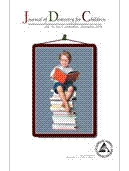
Comparison of Diagnostic Methods for Dental Caries
Purpose: The purpose of this study was to compare results of 4 different methods of diagnosing dental caries in 12-year-old children by evaluating their influence on the DMFS index and analyzing the correlation of the radiographic exam with the clinical exam.
Methods: The tools used were: 1) dental mirror; 2) dental mirror and dental explorer, both performed in an outdoor setting under natural light; 3) dental mirror; 4) dental mirror and dental explorer, both performed in a traditional dental setting under artificial light. The radiographic exam was carried out after the clinical exam.
Results: The dental explorer may be omitted from the clinical exam in epidemiological surveys and in clinical exams performed in dental offices. Methods 3) and 4) performed better in diagnosing dental caries than methods 1) and 2), which underestimated decay.
Conclusions: In the traditional dental setting, the process of dental cleaning and drying as well as artificial light, improved the diagnosis of dental caries. The radiographic exam used for epidemiological surveys, in relation to method 2), improved the clinical exam by 4%.
Methods: The tools used were: 1) dental mirror; 2) dental mirror and dental explorer, both performed in an outdoor setting under natural light; 3) dental mirror; 4) dental mirror and dental explorer, both performed in a traditional dental setting under artificial light. The radiographic exam was carried out after the clinical exam.
Results: The dental explorer may be omitted from the clinical exam in epidemiological surveys and in clinical exams performed in dental offices. Methods 3) and 4) performed better in diagnosing dental caries than methods 1) and 2), which underestimated decay.
Conclusions: In the traditional dental setting, the process of dental cleaning and drying as well as artificial light, improved the diagnosis of dental caries. The radiographic exam used for epidemiological surveys, in relation to method 2), improved the clinical exam by 4%.
Keywords: DENTAL CARIES; DIAGNOSIS; EPIDEMIOLOGY
Document Type: Research Article
Publication date: 01 May 2003
- Acquired after the merger between the American Society of Dentistry for Children and the American Academy of Pediatric Dentistry in 2002, the Journal of Dentistry for Children (JDC) is an internationally renowned journal whose publishing dates back to 1934. Published three times a year, JDC promotes the practice, education and research specifically related to the specialty of pediatric dentistry. It covers a wide range of topics related to the clinical care of children, from clinical techniques of daily importance to the practitioner, to studies on child behavior and growth and development. JDC also provides information on the physical, psychological and emotional conditions of children as they relate to and affect their dental health.
- Information for Authors
- Submit a Paper
- Subscribe to this Title
- Membership Information
- Information for Advertisers
- Ingenta Connect is not responsible for the content or availability of external websites
- Access Key
- Free content
- Partial Free content
- New content
- Open access content
- Partial Open access content
- Subscribed content
- Partial Subscribed content
- Free trial content